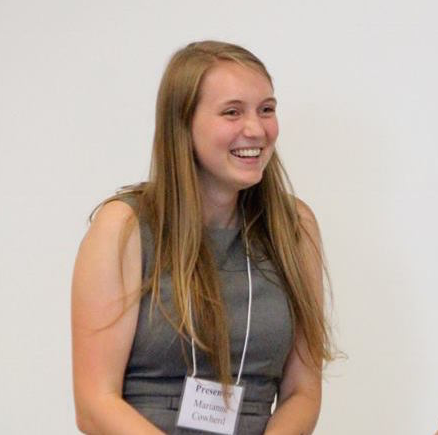The Author's Take: Marianne Cowherd
Author of "Transcriptional Regulators are Upregulated in the Substantia Nigra of Parkinson’s Disease Patients”

Contributor: Katherine Bercovitz
We recently chatted with Marianne Cowherd, JEI author, outdoor enthusiast and freshman at Stanford University about her research on Parkinson’s Disease and computational genomics. Marianne is first author of "Transcriptional Regulators are Upregulated in the Substantia Nigra of Parkinson’s Disease Patients”, which was published with her mentor, Dr. Inhan Lee (Univeristy of Michigan), on November 28, 2015.
When did you first become interested in computational genomics?
I went to a summer camp my sophomore year in high school on a whim. I didn’t think I would like it. (Laughs). After about a day, I was hooked. I found it interesting to see how much information is out there about humans and our genetics. And yet we know so little. I also liked how it is available to anyone with a computer so anyone can do research without funding or lab space.
Can you briefly describe for our readers what the field of computational genomics is?
Computational genomics is taking a big data approach to genetic information. The approach looks at things like gene sequences, along with gene expression and other genetic information.
Can you tell me about your research project that was recently published in JEI?
I started the research when I was a sophomore in high school. I went to a summer camp with Dr. Lee, who is the co-author of the paper. Dr. Lee mentored me and our research culminated in two projects. In the most recent project, I looked at the gene expression in people with and without Parkinson’s Disease. Specifically I researched the substantia nigra, which is the area of the brain most affected by Parkinson’s Disease. I looked for genes that were significantly expressed. Once I had identified genes that were significantly overexpressed or significantly under-expressed in those with the disease compared to healthy patients, I looked the genes up in an online database to see if there were any commonly affected areas of the brain.
What did you find?
The main finding was that among the upregulated genes there was a network of 33 genes that interacted with the cAMP-response element binding protein, which affects the transcription of different important genes.
Did the findings surprise you?
I wouldn’t say they surprised me because I didn’t have any expectations going in. But I also thought that I would do the analysis and not find any significant results. I did not expect that 33 genes would interact the way that they did.
.
What was the most challenging part of the process?
For me the most challenging part was picking a dataset because there are so many datasets floating around. Another challenge was thinking about the best way to do the analysis. You have all this data in front of you and you know there has to be something interesting in there. I initially had five or six different types of analyses that didn’t work before I found the best analysis to use.
What was the most rewarding part of doing this research?
Probably the first time I ran my list of genes through the program that reveals gene interactions. Usually you’ll see four or five genes that are interacting. When I ran the program and saw a giant cluster of genes interacting with each other, I was excited.
So you just started as a freshman at Stanford University. What do you want to major in?
I’m planning to major in biology, and I might concentrate in bio-immunology or microbiology.
What would be your dream career?
I’d really like to study infectious diseases and research how genes and the environment interact, especially in extreme conditions. Maybe something like parasitic transmission in situations with very limited resources.
Who is your role model?
Well, Dr. Lee, of course. She inspires me both in science and in life because she does an incredible job. She is both a rigorous scientist and one of the kindest people I have ever met.
What advice would you have for high school and middle school students who want to get involved in science research?
My advice is that science research is more accessible than it might seem. With computers and technology, there are so many ways to learn about science and conduct research with online genomic data. There isn’t a wall between scientists and everyone else and you have to show your PhD to get to do research. At the same time, it’s important to have a strong mentor.